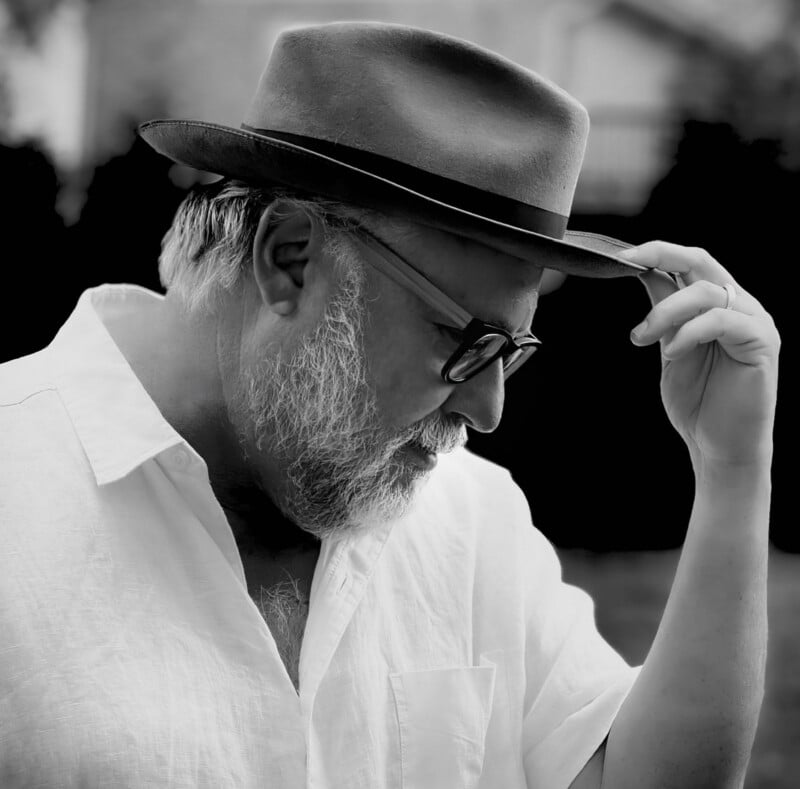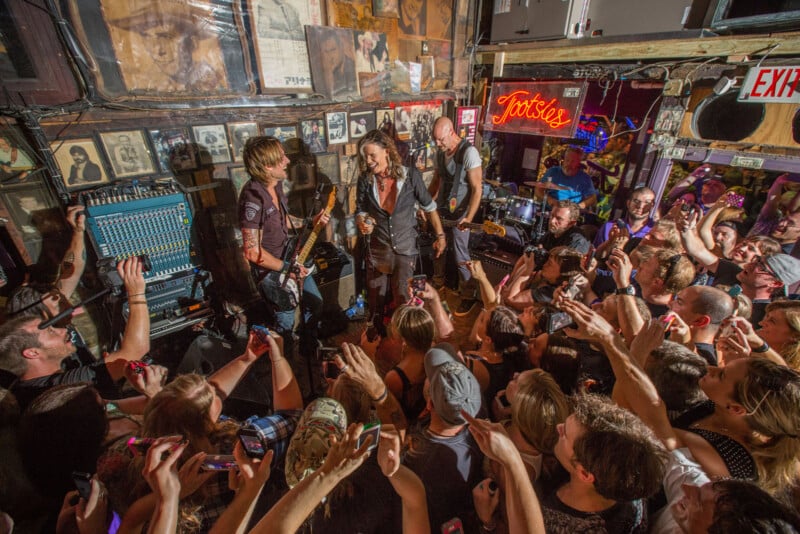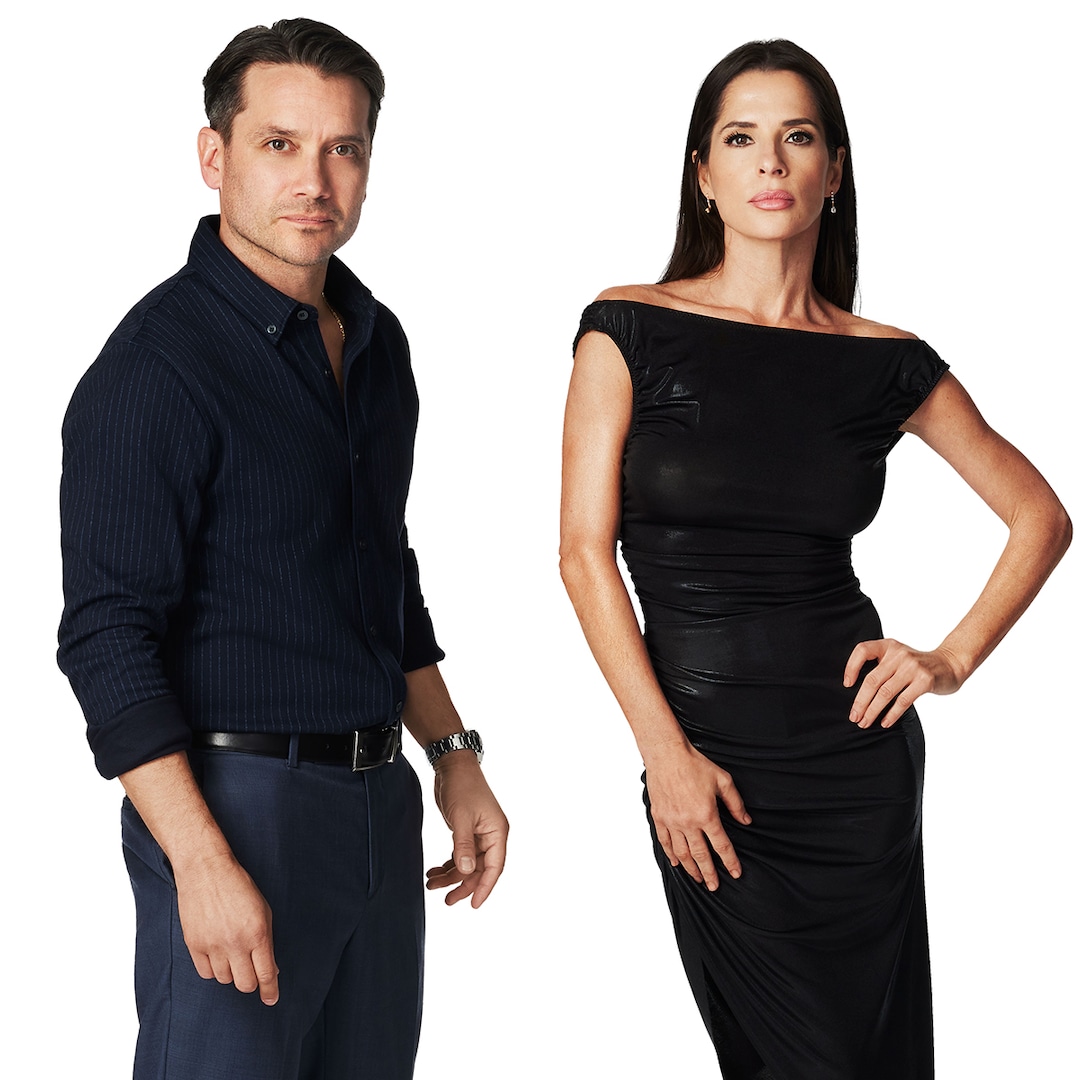 From left to right: Bill Monroe, mandolin in hand, on the green acres of his Nashville office; Taylor Swift glances back as superstardom barrels her way; Jelly Roll backstage at the Opry.
From left to right: Bill Monroe, mandolin in hand, on the green acres of his Nashville office; Taylor Swift glances back as superstardom barrels her way; Jelly Roll backstage at the Opry.Music and commercial photographer Ed Rode spent decades making pictures of Tennessee’s most iconic brands: country music talent and Jack Daniels Whiskey. The key to making a good photo, he says, is having a healthy respect for the subject, whether it’s a living, breathing being or an object waiting for its moment to shine. Case in point: a bottle of whiskey.
“With Jack Daniels, the ‘hero’ is the bottle,” says Rode. “It doesn’t talk back, but the challenges come from both the setting and capturing a product with a long, renowned history — you have to honor that in every shot.”
 A fifth of Jack Daniel’s sits before the barrels where the aging happens; a rare snowfall blankets Lynchburg, framing an old truck against the historic barrelhouse. | Photos by Ed Rode
A fifth of Jack Daniel’s sits before the barrels where the aging happens; a rare snowfall blankets Lynchburg, framing an old truck against the historic barrelhouse. | Photos by Ed RodeRode explains that shooting in barrelhouses demands natural light and long exposures on tripods because even a single spark from a strobe can be dangerous around thousands of whiskey barrels. In contrast, working with artists “brings a level of unpredictability you don’t get when shooting a product,” he says. In both cases, the goal is the same, “to create an image that’s not only visually striking but true to the story or brand behind it.”
 Photographer Ed Rode | Photo by Maddy Rode
Photographer Ed Rode | Photo by Maddy RodeRode recently released Songwriter Musician, a photo documentary book of Nashville’s legendary storytellers and players. He explains how to “go beyond just the portraits” with stars who balance varied, competing priorities. Staying flexible, reading the artist’s mood, “respecting their personality and understanding their legacy while managing all the technical demands of the shoot, is key,” he says. “There are always layers — managers, agents, entourages — and usually only a brief window to get the shot.”
 In Songwriter Musician, Rode captures three decades of Nashville’s stars, songwriters, and session greats at decisive, unguarded moments in their careers. | Photo by Ed Rode
In Songwriter Musician, Rode captures three decades of Nashville’s stars, songwriters, and session greats at decisive, unguarded moments in their careers. | Photo by Ed RodeThe Power of Trust
Without trust, Rode says the creative process breaks down. “Celebrities protect their image, so if an artist feels like you’re there for a quick, transactional shoot, you’re going to hit a wall,” he says. “Without trust and respect, the chance to capture something genuine becomes a lot harder. The magic happens when they feel comfortable and are part of the creative process.”
In the Moment: Should You Talk to Tune In?
Knowing when to speak up or hold back — depending on who your subject is — can make all the difference in creating a genuine connection.
“You have to read the room and adjust to the emotions and energy in front of you,” Rode says. “Some people are intense; others more reserved. It’s crucial to meet them where they are.”
Light
When it comes to lighting, Rode believes less is more. “I try to keep it as simple as possible,” he says. “I usually use a one-light setup because it lets the moment and the subject’s personality take center stage.” He often opts for Rembrandt lighting because “it creates depth, dimension, and mood in a striking way, without visual distractions.”
The Art of Revealing Personality in Portraits
Every shoot starts with observation, with the goal of finding a connection to make a genuine image. Sitting in Willie Nelson’s bus after a show, Rode knew he had a tough task: “How do I capture the essence of a man who’s been photographed a million times?”
Rode asked Nelson what song he was working on. “That question unlocked something deeper,” the photographer recalls. “I saw his eyes shift toward his guitar pick. A moment before he started to play, I got off one frame and I knew I had captured something real.”
 Willie Nelson aboard his tour bus with Trigger, his beloved guitar. | Photo by Ed Rode
Willie Nelson aboard his tour bus with Trigger, his beloved guitar. | Photo by Ed RodeExpecting the Unexpected
Quick adjustments can create opportunity. Keith Urban, in Nashville promoting a new album, made an impromptu stop at the historic downtown bar Tootsies. As a surprise, Urban called out to Steven Tyler of Aerosmith (who was hiding out in a corner booth) to join him for a blues jam. Rode, inside the packed bar, knew he had to get a better angle.
“I bought a fan a beer so he would hold my light stand, then I climbed on top of the bar so I could capture it all from this incredible vantage point,” he said. “It was as if I were floating above the chaos. That’s why I love photography — when you’re open to surprises, the unexpected can become unforgettable.”
 Keith Urban and Steven Tyler light up Tootsies with a surprise jam. | Photo by Ed Rode
Keith Urban and Steven Tyler light up Tootsies with a surprise jam. | Photo by Ed RodeBreaking In
Nashville is called a “10-year town” because success typically doesn’t happen overnight. Rode moved to Nashville in 1990, working five years for the afternoon newspaper.
“There were more failures than successes, but I kept shooting,” he says. “I was in it for the long haul, and honestly, just getting paid to take photographs felt like I was living the dream.”
After 34 years of building a career, he can’t pinpoint a precise moment when he felt he’d “made it” but considers his work with Neil Diamond pivotal. Rode first met Diamond through a producer who was working on his next album.
“I was at the studio and before heading into the sound booth, Neil sat down in front of the drum set and lit a cigar,” Rode recalls. “As the smoke curled in my direction, it hit me — this moment, this portrait — was hard work meeting opportunity.”
By the end of the day, Diamond asked Rode to become his documentary photographer during his Nashville sessions. “I felt like I had jumped the fence,” Rode says.
 Neil Diamond during the Nashville sessions. | Photo by Ed Rode
Neil Diamond during the Nashville sessions. | Photo by Ed RodeTurning Moments Into Stories
As a working photographer and college instructor, Rode believes the art of photography goes beyond technical expertise. “Photography isn’t just about mastering skills,” he says. “It’s about finding your own voice, telling stories, and seeing the world in new ways.”
In his classes at Murray State University, Rode encourages students to stay curious, keep learning, and continually step outside their comfort zones.
In 1986, Rode earned an undergraduate degree in business administration from Aquinas College in Grand Rapids, Michigan. He also holds a master’s degree from Ohio University (photo communications, 1990).
Explore more of Rode’s historical documentary work in his latest book, Songwriter Musician, available at EdRode.com. An accompanying photography exhibit featuring images of Willie Nelson, Taylor Swift, Dolly Parton, Vince Gill, and John Prine and others, alongside objects and memorabilia related to the artists is on display through the end of the year at the Birthplace of Country Music Museum.
About the author: Ken Klein lives in Silver Spring, Maryland; he is retired after a career in politics, lobbying, and media including The Associated Press and Gannett in Florida. Klein is an alumnus of Ohio University and a member of the Dean’s Advisory Council of the Scripps College of Communication. Professionally, he has worked for Fort Myers News-Press (Gannett), The Associated Press (Tallahassee), Senator Bob Graham, and the Outdoor Advertising Association of America (OAAA).



:quality(85):upscale()/2024/11/07/789/n/1922153/38527352672cff57bff864.87043841_.png)
:quality(85):upscale()/2023/11/02/731/n/1922729/5b5445f96543cf5c21d629.18264167_.jpg)

 English (US) ·
English (US) ·